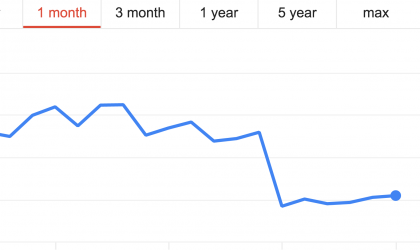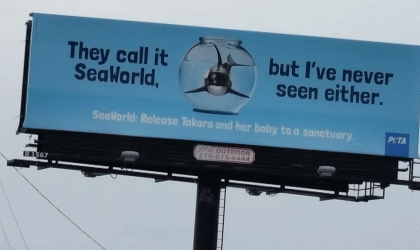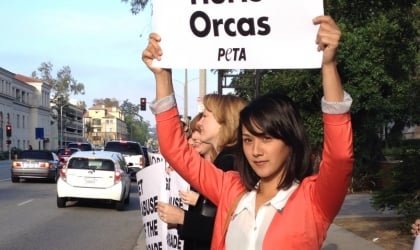A new study published in Archives of Oral Biology has documented that there was significant damage to and drilling of the teeth of orcas held captive by SeaWorld and its partner Loro Parque. The authors of the study—John Jett, Ingrid N. Visser, Jeffrey Ventre, Jordan Waltz, and Carolina Loch—found that every orca they examined had some form of tooth damage.
'Killer' Toothaches Cause Misery for Captive Orca https://t.co/EeL19ZyCNT pic.twitter.com/a2UuPUDHpa
— ScienceDaily (@ScienceDaily) October 12, 2017
According to the findings, the damage begins early on in captive orcas’ lives. More than half of the orcas examined suffered from “moderate to extreme tooth wear in their lower jaws,” and this wear and other damage was likely caused by “chewing concrete and steel tank surfaces,” said Jett.

“Drilled and exposed pulp cavities of first 5 mandibular teeth on left side from dental disease and/or trauma.” – Dr. Heather Rally
But extreme wear, fractures, and missing teeth caused by gnawing on tank surfaces weren’t the only kinds of dental trauma that researchers identified. More than 61 percent of the orcas examined in the study were found to have undergone modified pulpotomy procedures, or—in layperson’s terms—their teeth were drilled. During this painful procedure, “a hole is drilled into the tooth to extract the soft pulpy tissue inside.” However, unlike when humans have a tooth drilled, the holes bored into orcas’ teeth are never filled or capped. In order to prevent infection-causing bacteria from becoming trapped in the drilled teeth, these holes must be flushed daily with chemicals. Even the thought of going to the dentist can make adult humans cry—no sentient being deserves to be subjected to this excruciating pain.
#SeaWorld drills holes into pulp cavities of broken or worn teeth to open them to be flushed. #VetVisitsSW pic.twitter.com/DqXKJXXvoh
— PETA (@peta) August 11, 2015
According to Ventre, this tooth damage, which he deemed “the most tragic consequence of captivity,” can lead to a need for chronic antibiotic therapy, which can compromise orcas’ immune systems. Kasatka—the third orca and sixth marine mammal to die at SeaWorld this year—is a real-life example of such consequences.
BREAKING: Another orca is dead at #SeaWorld. Kasatka's death comes after she suffered from a bacterial infection for 10 years. #RIP pic.twitter.com/0Lx4KXCoPF
— PETA (@peta) August 16, 2017
Although we’ve known for some time that confining these animals to prison-like tanks is detrimental to their health, this new study provides hard statistics that make it impossible to ignore just how much these orcas’ welfare is being compromised. Although the damage has already been done to these orcas, seaside sanctuaries can offer them “an environment that maximizes well-being and autonomy and is as close as possible to their natural habitat.” —the least that’s owed to them.
Keep reading to learn how you can urge SeaWorld to get with the seaside-sanctuary program.
What You Can Do
In addition to boycotting the abusement park, you can do more to help marine mammals imprisoned at SeaWorld: Click the button below to ask the company to end all animal acts at its parks and release the animals it holds captive into seaside sanctuaries.




